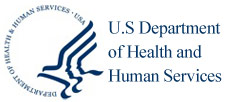- CMS: Medicare Program; Implementation of Prior Authorization for Select Services for the Wasteful and Inappropriate Services Reduction (WISeR) Model
- Public Inspection: CMS: Medicare Program: Implementation of Prior Authorization for Select Services for the Wasteful and Inappropriate Services Reduction Model
- CMS: Secretarial Comments on the CBE's (Battelle Memorial Institute) 2024 Activities: Report to Congress and the Secretary of the Department of Health and Human Services
- HHS: Patient Protection and Affordable Care Act: Marketplace Integrity and Affordability
- HRSA Announces Action to Lower Out-of-Pocket Costs for Life-Saving Medications at Health Centers Nationwide
- Public Inspection: HHS: Patient Protection and Affordable Care Act: Marketplace Integrity and Affordability
- Increased Risk of Cyber Threats Against Healthcare and Public Health Sector
- Eight Hospitals Selected for First Cohort of Rural Hospital Stabilization Program
- Announcing the 2030 Census Disclosure Avoidance Research Program
- CMS: Medicare Program; Hospital Inpatient Prospective Payment Systems for Acute Care Hospitals and the Long-Term Care Hospital Prospective Payment System and Policy Changes and Fiscal Year 2026 Rates; Requirements for Quality Programs; and Other Policy Changes; Correction
- CMS: Medicare Program; Hospital Inpatient Prospective Payment Systems for Acute Care Hospitals and the Long-Term Care Hospital Prospective Payment System and Policy Changes and Fiscal Year 2026 Rates; Requirements for Quality Programs; and Other Policy Changes; Correction
- CMS: Medicare and Medicaid Programs; Contract Year 2026 Policy and Technical Changes to the Medicare Advantage Program, Medicare Prescription Drug Benefit Program, Medicare Cost Plan Program, and Programs of All-Inclusive Care for the Elderly; Correction
- CMS: Medicare and Medicaid Programs; Contract Year 2026 Policy and Technical Changes to the Medicare Advantage Program, Medicare Prescription Drug Benefit Program, Medicare Cost Plan Program, and Programs of All-Inclusive Care for the Elderly; Correction
- CMS: Medicare Program; Prospective Payment System and Consolidated Billing for Skilled Nursing Facilities; Updates to the Quality Reporting Program for Federal Fiscal Year 2026
- CMS: Medicare Program; FY 2026 Hospice Wage Index and Payment Rate Update and Hospice Quality Reporting Program Requirements
New HHS Plan and Policy Statement for Climate Impacts on Health Released

HHS revealed its roadmap for assuring that all parts of the Department address the effects that climate change can have on health and well-being. The plan is in response to an Executive Order for a whole-of-government approach to confronting the crisis that includes extreme weather, rising temperatures and sea levels, and increases in levels of carbon dioxide.
See the plan here: New Plan and Policy Statement for Climate Impacts on Health.
JAMA: Birth Volume and Geographic Distribution of U.S. Obstetric Hospitals, 2010 – 2018
In an open-access article from the Journal of the American Medical Association (JAMA), researchers report that, among more than 34 million hospital births in the U.S., 37.4 percent of the hospitals were low volume. Among low-volume hospitals, 18.9 percent were isolated and 58.4 percent of these were rural.
See JAMA: Birth Volume and Geographic Distribution of U.S. Obstetric Hospitals, 2010 – 2018 for the article.
Statewide Age-Friendly Initiatives: An Environmental Scan
Age-friendly policies and programs have typically occurred at the local level but are becoming increasingly common at the state level. This is of particular importance for rural communities as the share of older adults is increasing in rural areas faster than in urban areas, yet funding of and access to aging supports in rural areas may be more limited or disjointed. This policy brief from the University of Minnesota Rural Health Research Center identifies these state-level initiatives and the extent to which such programs have an explicit rural focus.
For more information, see Statewide Age-Friendly Initiatives: An Environmental Scan.
HRSA Payment Program for RHC Buprenorphine-Trained Providers

In June of this year, the Health Resources and Services Administration (HRSA) launched an effort to improve access to substance use disorder treatment by paying for providers who are waivered to prescribe buprenorphine, a medication used to treat opioid use disorder. Rural Health Clinics still have the opportunity to apply for a $3,000 payment on behalf of each provider who trained to obtain the waiver necessary to prescribe buprenorphine after January 1, 2019. Approximately $1.5 million in program funding remains available for RHCs and will be paid on a first-come, first-served basis until funds are exhausted. Send questions to DATA2000WaiverPayments@hrsa.gov. There is ongoing availability of a free online course for waiver eligibility training from the American Osteopathic Academy of Addiction Medicine and the Providers Clinical Support System.
See HRSA Payment Program for RHC Buprenorphine-Trained Providers for more information.
Reaching Farm Communities for Vaccine Confidence

The AgriSafe Network is a nonprofit organization that provides information and training on injury and disease related to agriculture. Their health professionals and educators created a social media toolkit that aims to provide clear messages about COVID-19 vaccination for agriculture, forestry, and fishing workers.
See Reaching Farm Communities for Vaccine Confidence for more information.
Place-Based Patterns in Youth Suicide Rates

An analysis of public-use data from the Centers for Disease Control and Prevention revealed rural-specific trends in suicide for Americans aged 10 to 24 over the last 20 years. The study from the American Communities Project and the Center on Rural Innovation found that rural communities have seen some of the highest rates in the age group. Two of the geography types studied, Hispanic Centers and the African American South, had lower rates than the national average. However, rates for Native American communities were far above all others, in some cases more than double other types.
See Place-Based Patterns in Youth Suicide Rates for more information.
Case Study: Barriers to Hub and Spoke Model for OUD Treatment
Originating in Vermont, the Hub and Spoke model provides a point of care at each stage of recovery from opioid use disorder (OUD), from the intense beginning to long-term treatment. This case study examines what happened in Montana, designated as a Frontier and Remote state by the federal government. Earlier this year, the HRSA-supported Center on Rural Addiction at the University of Vermont conducted a baseline needs assessment (pdf) in that state of rural and non-rural practitioners during two separate one-month periods in 2020. Both rural and non-rural practitioners named stigma and patient time/transportation as top barriers to treatment. A majority of rural providers also named medication diversion as a top concern.
See Case Study: Barriers to Hub and Spoke Model for OUD Treatment for more information.
CDC Seeking Public Input on Work-Related Stress for Health Workers
 The Centers for Disease Control and Prevention (CDC) seeks information on best practices and promising practices for the positive mental health and well-being of health workers. The feedback will be used to inform interventions under development by the CDC’s National Institute for Occupational Safety and Health. The request includes feedback about first responders and emergency services personnel experiencing higher levels of stress during the pandemic.
The Centers for Disease Control and Prevention (CDC) seeks information on best practices and promising practices for the positive mental health and well-being of health workers. The feedback will be used to inform interventions under development by the CDC’s National Institute for Occupational Safety and Health. The request includes feedback about first responders and emergency services personnel experiencing higher levels of stress during the pandemic.
See CDC Seeking Public Input on Work-Related Stress for Health Workers for more information.
Comments are due by November 26.
HHS Announces New Plan for Health Workforce

The U.S. Department of Health & Human Services (HHS) released a new strategy for expanding supply, ensuring equitable distribution, and improving the quality of the nation’s health workforce. The plan is one of the requirements of the Coronavirus Aid, Relief, and Economic Security (CARES) Act, and will be implemented by the Health Resources and Services Administration and several other operating divisions of HHS (see Appendix D).
See HHS Announces New Plan for Health Workforce for more information.
New Funding and Resources for State Medicaid Agencies

The Centers for Medicare & Medicaid Services launched a new “one stop shop” for home and community-based services. State-level stakeholders can learn about innovative models for care delivered to Medicaid beneficiaries outside of an institution, such as in their own home. These services, which can be particularly challenging in rural areas, include personal hygiene, nutrition, home health, and transportation. Funding from the American Rescue Plan provides qualifying states with a temporary 10 percentage point increase for certain expenditures for home and community-based services.
See New Funding and Resources for State Medicaid Agencies for more information.
